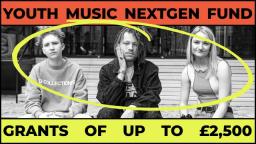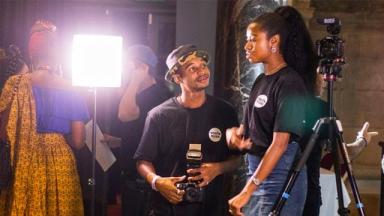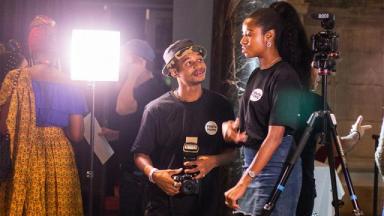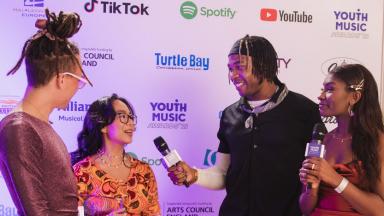
With the second round of the Youth Music NextGen fund open for applications, we spoke to writer Yomi Adegoke about how she'd spend a grant on a music journalism project.
Written By Yomi Adegoke
There are lots of expenses that might not be obvious when it comes to music journalism, whether that's as a journalist or as someone attempting to create their own music platform. Here are a few things I might spend £2,500 on:
Transcribing and recording software for interviews
It’s not the most fun way to spend money, but definitely amongst the most useful when starting out. Whilst you can get free recording and transcribing software online, they often come with limitations that are well worth getting rid off once you can afford to. For instance, the speech to text transcription service Otter.ai currently only offers 40-minutes worth of transcription for free - not having to wade through hours of interview audio however is priceless.
Equipment
With remote interviews via Zoom fast becoming the norm due to the pandemic, it's worth investing in decent equipment if you’re able. A quality mic and set of headphones for recording saves a lot of time and aggro throughout the recording process and makes things smoother for everyone involved. If you don't already have one, a good, reliable laptop is also something you will never regret getting.
Website
If you’re trying to break into the industry as a music journalist, it helps to let people know what you’re about in the simplest way possible. Social media can be useful, but very often the personal bleeds into the professional, so in order to keep things as clean as possible get yourself a decent website. It shouldn’t cost too much to create one that does the job via Squarespace, and is a great way of outlining what you’ve done and what you want to do to interested parties. You can showcase your work, create a blog or start up a music platform too.
Pay contributors
This is more specific to if you want to create a platform, but if you intend to have people contributing to your platform and can afford to remunerate them with a nominal fee, leave some money aside to do so. There may be other things you want to pay people to do along the way too: perhaps to build your site if you want something fancier, create a logo if you’re building a brand or make graphics and social media content if you’re hoping to gain traction online.
Subscription to industry outlets and news
Keeping in the loop is always a good idea, so trade publications that aren’t accessible due to paywalls are worth subscribing to. That also goes for general news, magazines and outlets - there’s only so much you can get from social media.
Headshot photo
By no means crucial, but if you have some money spare, a serious looking byline photo is always handy - I spent the best part of my early journalism career with a grainy selfie as a headshot, and was very relieved once I finally made the switch to something more professional.

The Youth Music NextGen Fund is for early-stage musicians and wider music adjacent creatives to invest up to £2,500 in their own projects and make their ideas happen. The fund is especially aimed at people who want to launch a project, idea, or business for those whose lack of finance holds them back from pursuing their goals.
Applications for Round 2 of the NextGen Fund are now open. The deadline for applications is 5pm Monday 17 January 2022.
You may also like...
The importance of being paid for creative work
We spoke to young creatives who worked in roles at the Youth Music Awards 2019 about what it meant to them to get paid for their work.
How to get into gig photography on a budget
Interested in becoming a gig photographer? Check out top tips from Writer, Editor and Photographer Bethan McConnell.
PR tips for independent artists
Read our guide to PR for artists who perhaps cannot afford to pay a PR company, or for artists who are just starting out in the industry.




